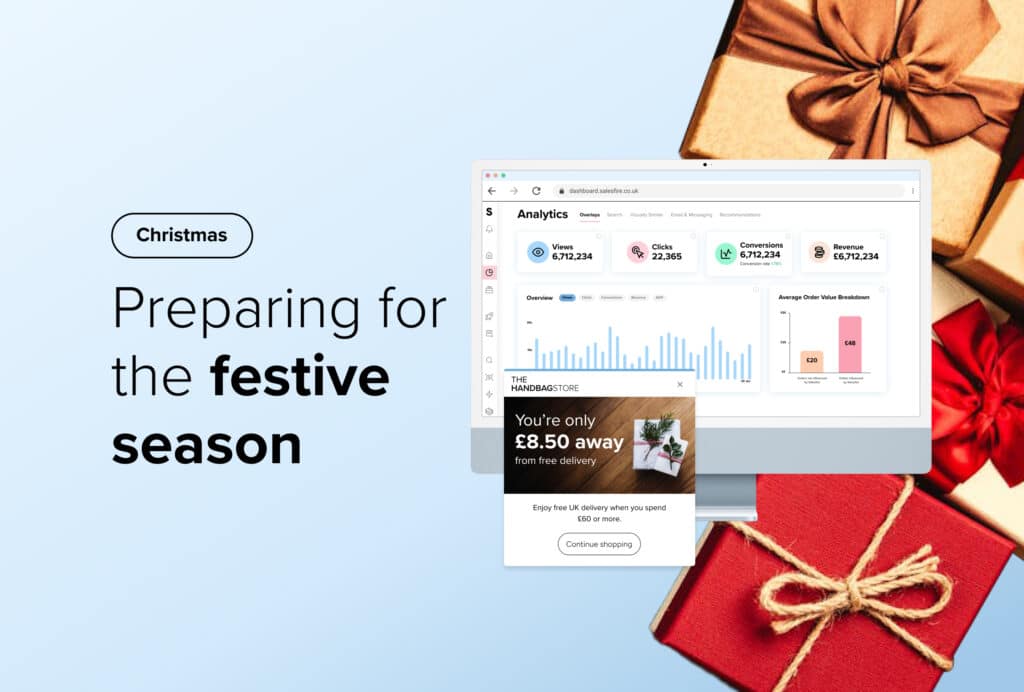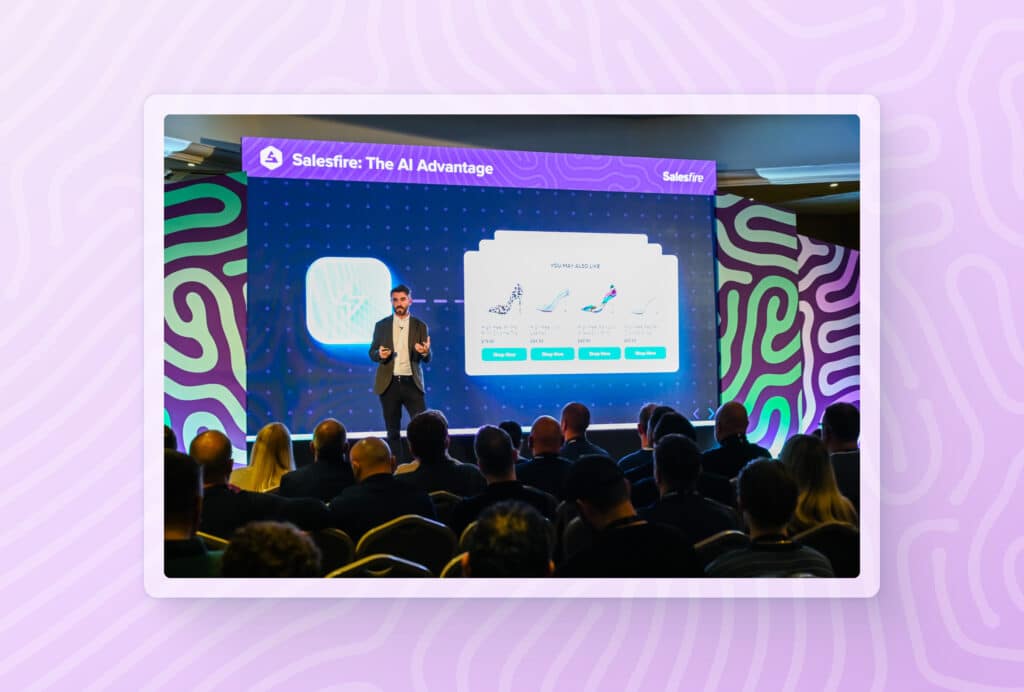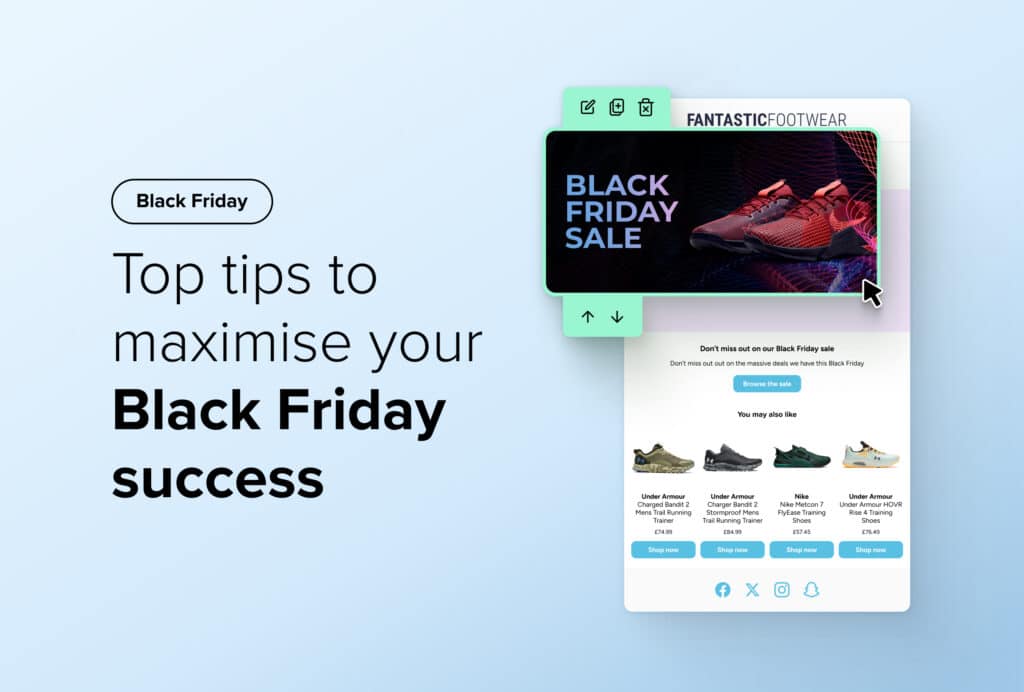What Your eCommerce Email Marketing Strategy is Missing
By Courtney O'Riordan • Last updated: Friday Jun 14th, 2024
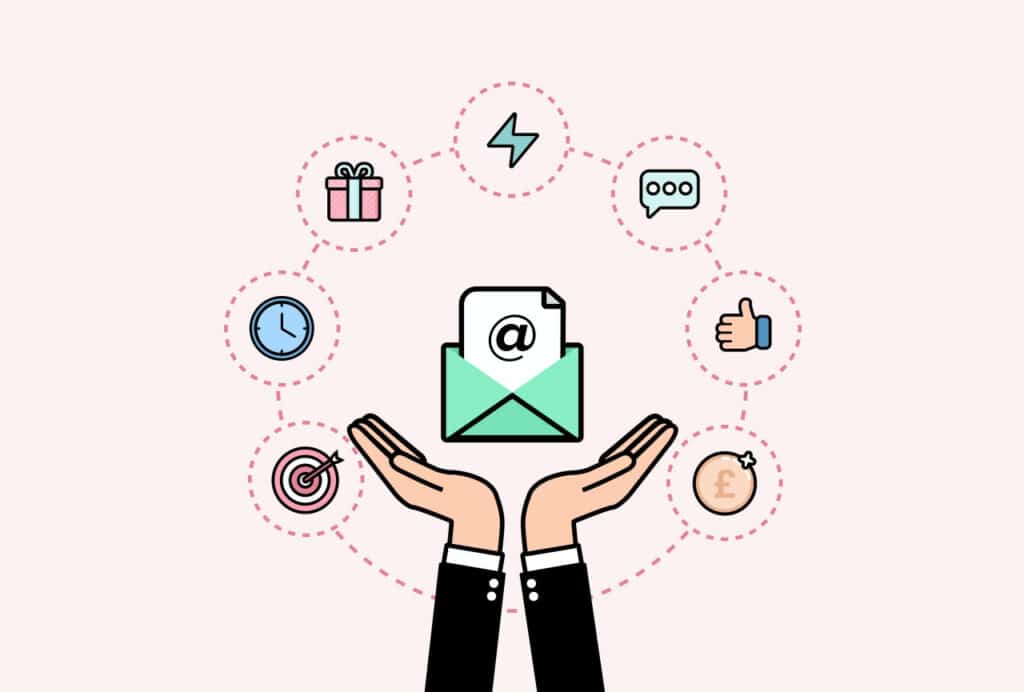
Having an optimised email marketing strategy is crucial for customer retention. Take a look at how you can elevate your email strategy to drive conversions.
As the eCommerce industry continues to evolve, so do marketing strategies.
Despite newer players like social media advertising and influencer marketing entering the eCommerce space, email marketing stands the test of time.
As high customer retention has become the hallmark of a successful eCommerce business, automated email marketing has proven its worth among newer strategies.
Understandably so with 80% of business professionals believing that email marketing increases customer retention.1
What is email marketing?
Email marketing is the act of using emails to promote a business’ products or services to a group of customers or individuals.
It can be used for:2
- Lead generation
- Reducing basket abandonment
- Brand awareness
- Relationship building
- Customer engagement between purchases
Crucially, you can future-proof your online store by using email marketing to successfully increase your site’s conversion rate.
But with your competitors also vying for attention in your customers’ inboxes, just having an email marketing strategy isn’t enough.
If you haven’t optimised your emails with personalisations to encourage opens and clicks, they won’t perform to their full potential.
In this article, we’ll discuss how you can elevate your emailing tactics beyond a simple order confirmation, to become an integral and profitable part of your marketing strategy.
What is missing from your email marketing strategy
1. Enhanced basics
In email marketing, as with most things, you need strong foundations to build on to ensure long term success.
In this case, the foundations of your email strategy are the most basic elements of an email.
You can strengthen them by:
- Personalising the subject line: Add the name of your email recipient to ensure high open rates.3
- A/B testing: Test a range of times and days to figure out the optimum schedule to send emails.
- Add an emoji to the subject line: Emojis have risen in acceptance, even in workplace settings. This makes them the perfect attention grabbing tool when used in moderation.
- Optimise for all devices: Be sure your email will display correctly on all devices.
Figuring out what encourages recipients to open your email as soon as it lands in their inbox is vital.
From there, your carefully crafted content has a strong chance of achieving your desired result, whether that be increased customer loyalty or successful conversions.
Considerations: Ensure your subscriber list has legitimate interest by encouraging them to sign up through opt-in forms and data collection Overlays.
Collecting email addresses in this way creates an audience that is genuinely engaged with what you have to say to boost your open and click-through rates.
2. A segmented audience
Segmentation is the unsung hero of your email marketing strategy.
Segmenting your audience not only increases the effectiveness of your email campaigns but puts you ahead of the 70% of brands that fail to do so.4
Here are a few examples of how you can begin to segment your audience to increase conversions:
- Segment by location: If a recipient is in a hot climate they want to view products such as sandals or fans rather than boots and winter coats. Increase your conversion rate by using this knowledge to target audiences with relevant products and deals.
- Past purchases: Send informational content like how-to and care guides about a previous purchase to add value to a customer’s post-purchase experience.
- On-site behaviour: Send personalised emails based on web pages a customer did or didn’t engage with.
- New/returning customers: Offer discounts that reflect the user’s stage in the buyer’s funnel to increase customer loyalty.
Once you have identified the audiences you wish to target, you can tailor your email sequences in a way that aligns with their on-site behaviour, purchases and lifestyle.
Taking care to do this elevates a user’s interactions with your brand beyond being simply transactional, allowing you to develop a lasting relationship with your customers.
What you can do: Give your segmented lists limited-time discounts or perks, like free shipping, to encourage them to make purchases.
3. The power of cart abandonment emails
The impact of rising customer acquisition costs is already being felt by online retailers.
This means that every customer that lands on your site is more important than ever.
Be sure you’re looking after them with timely cart abandonment emails to keep them engaged with the business.
With tools such as Salesfire’s Email Retargeting, you can guarantee that you’ll efficiently target customers with:
- A 30-second delay email: Persuade customers to complete their purchase at this pivotal moment in the sales funnel.
- A 1-day delay email: Sending an email after 24 hours can create a 17.7% conversion rate as opposed to 7.7% if sent after 48 hours.
- A 3-day delay email: Emails sent after 48 hours average an 18.2% conversion rate.5
Sending reminders at optimal times increases the chances of achieving a completed purchase.
Addressing your customers based on their individual behaviour furthers the personal attachment between them and your brand while keeping your product at the forefront of their minds.
Considerations: Create weekly email templates to send customers meaningful Recommendations, based on their previously viewed or purchased, to cross-sell your products.
By extending your personalisation efforts from the on-site journey to post-purchase, you can increase sales and customer retention rates.
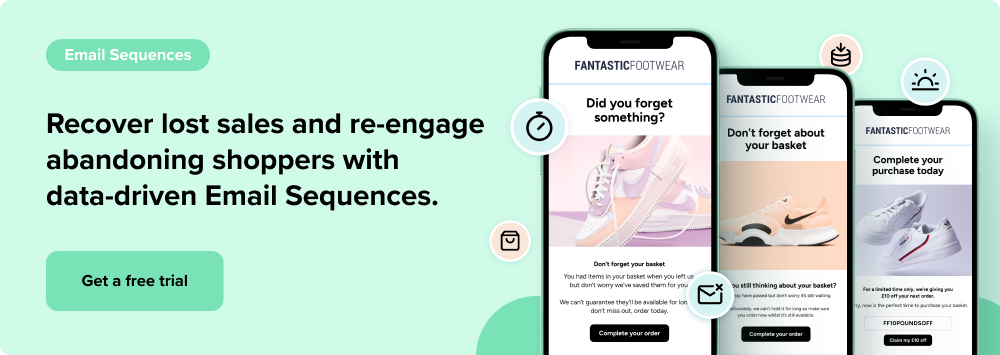
4. Creating a two-way conversation
It’s easy to ignore negative feedback, especially when it’s telling you what you might not want to hear.
Avoiding reviews due to this reason can negatively affect the success of your online store.
Ultimately, successful eCommerce retailers show their customers they value their opinion from the very first purchase.
To show you care about every interaction with your brand, capitalise on your direct line of communication by opening up the conversation to include your customer.
Encouraging reviews in post-purchase emails provides shoppers the opportunity to give timely feedback on their enjoyment of your product.
Whether you gain insight into an issue with the product itself, your website or even the returns process, you then have the chance to act to repair your relationship with your customer.
In the short term, you can expect to increase customer retention and satisfaction while improving your offering.
In the long term, actioning feedback means you will develop stronger bonds with your customers while receiving fewer negative comments.
Essentially, proving to your customers that you care about their opinions and enjoyment of the product is immensely valuable in securing longevity for your business.
5. Building a loyal customer base
As discussed, having an email marketing service is a great way to encourage repeat purchases when used correctly.
But sometimes sending your customers the highest quality content isn’t enough to encourage a second purchase on its own.
Experiment with promotional emails that highlight your referral program to incentivise the introduction of new customers to your site.
Through this method, you can gain customers from the 92% of consumers who trust recommendations from friends.6
While growing your customer base you can enjoy repeat purchases from those using the referral program to take advantage of the incentive offered.
In a similar vein, you can motivate conversions by offering a second-purchase discount.
With just 20% of first-time buyers making a second purchase, it is essential to provide a reason to purchase from your site. Once you convince a customer to make that second purchase, it is then more than twice as likely that they will buy for the third time.7
This means you could create a loyal customer from just one email.
You’ve identified what is missing from your email marketing strategy, what now?
Optimising your email strategy to improve your conversions is just the beginning.
Uphold your efforts to create a seamless experience across all of your marketing strategies by implementing conversion rate optimisation solutions.
For example, once you introduce Recommendations to your emails, introduce them to your site.
Or place on-site Overlays at the beginning of your email sequences to maximise communication.
The ease of implementing Salesfire solutions to your site allows you to optimise your website and emails simultaneously.
1 40+ Email Marketing Statistics You Need to Know 2022 | Optimonster
2 Email Marketing | Mail Chimp
3 Why is Personalisation So Important in Email Marketing? | mailingmanager
4 50 Email Segmentation Tips You Need To Use Now | Optinmonster
5 Cart Abandonment Email Best Practices | Mail Poet
6 8 Examples of Successful eCommerce Referral Programs | Referral Candy
7 Your Customer’s Second Purchase is the Most Important | Marketing Profs
See how Salesfire can help you optimise your product discovery experience, email one of our experts at [email protected] or book a free demo of our personalisation tools.

